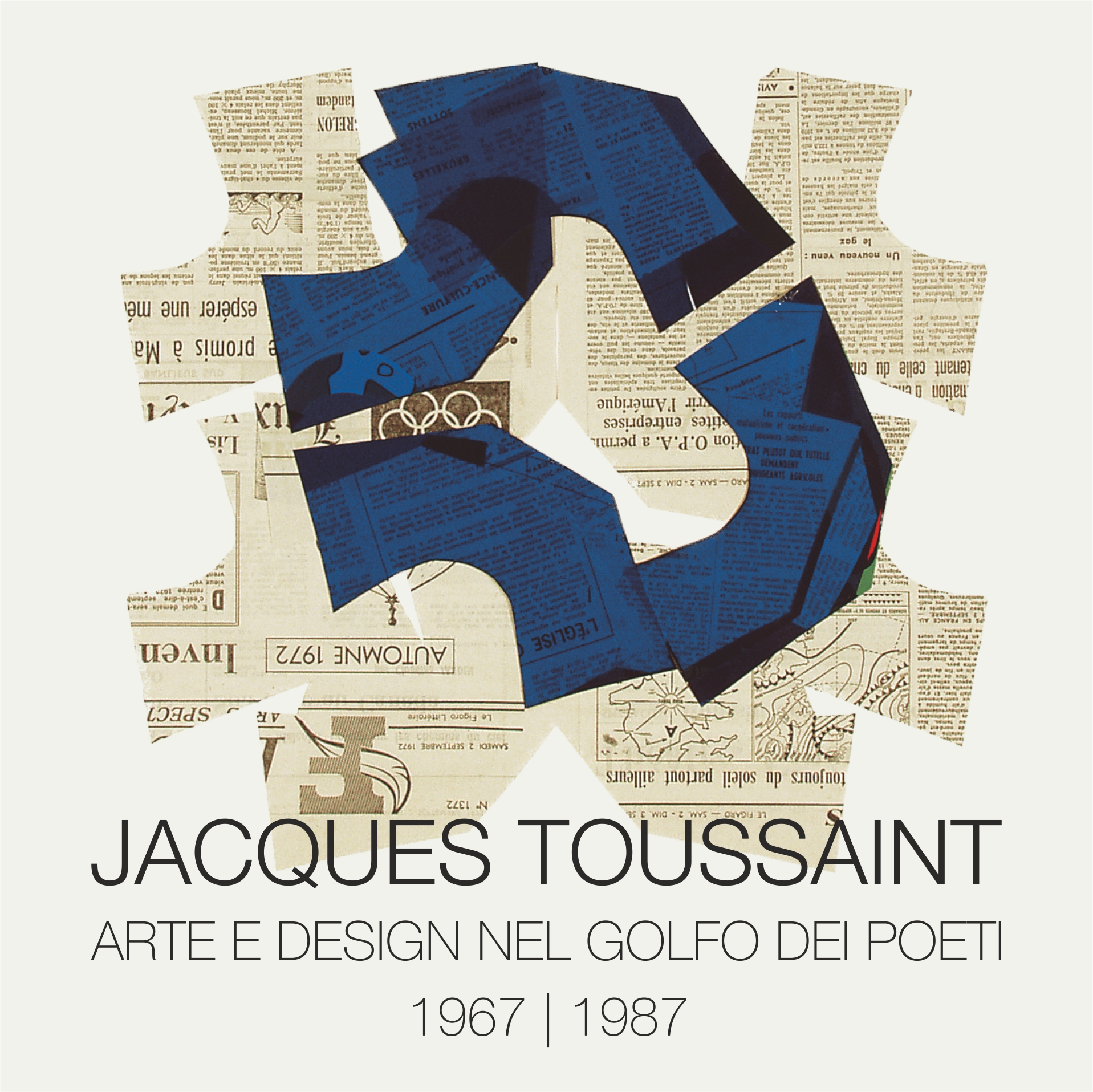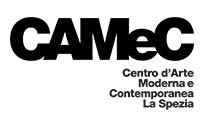
Jacques Toussaint
The exhibition is inspired by the French artist Jacques Toussaint’s twenty-year stay in Lerici from the 1960s to ‘80s, which gave him an extended opportunity to breathe a lively cultural climate and produce works in close relationship and harmony with the places and the nature and with authoritative cultural and artistic figures such as Attilio Bertolucci, Valentino Bompiani, Silvio Coppola, Vico Magistretti, Giorgio Soavi, Mario Spagnol, Mario Soldati.
The exhibition itinerary unfolds chronologically, starting with a glance at the preceding period (“the years of Paris”, the focal point of his training and early development) and concentrating in particular on the distinctive osmosis between art and design which was to become the main element of the artist’s creative evolution.
It was precisely in Lerici, at the Castle, in the summer of 1969, that Toussaint conceived and set up a pioneering exhibition, entitled Le due realtà (The two realities), which is also documented here. This exhibition presented an original debate on the use of the technology and new materials made available by industrial research and used in serial production and the arts.
The visitor will be able to see Toussaint’s design work of those years: the aluminium and saddlery chair which he significantly named Golfo dei Poeti (Gulf of the poets); the table Pontile (Quay), inspired by the jetty of Lerici which he was able to contemplate every morning from the wide windows of his home.
The co-curator Giosué Allegrini specifies: “Design, yes, but design which conceived the object-cum-sculpture as not deliberately immersed in a space of action as was typical of the ‘60s; rather as an image-cum-rational concept which interacts with the surrounding space, setting up deep relationships and expressive interdependences with it. The formal tool is geometry, which is however used not in exclusive terms of structural rationality, but intuitively as an expression of energies, memories and spatial and environmental evocations”.
Also present in the exhibition are works made in the Ligurian workshop which document the artist’s rapid movement towards geometrical and symbolic experimentation, characterised by the presence of blue, which can also be connected to the influence of the Ligurian setting. Regarding this development, Marzia Ratti, the co-curator of the echibition, points out: “The radical change in Toussaint’s language appears full force in the 1970 sculptures/paintings, where the exploration of geometry in space begins; using the square module of the box, this investigates the possibilities of a three-dimensional composition free of any precise reference to reality except as regards the physical behavior of the materials used. Materials with their primary reactions to processing are his central interest, whereby the two realities, art and technique, art and design, are clearly combined in a single creative concept”.
In order to convey to visitors a clear idea of Jacques Toussaint’s creativity which has developed over more than 50 years of work, the curators and the artist himself decided to insert an artistic intervention at the end of the exhibition which reflects the current spirit of his research. Its intention is to offer visitors more than just a chance for mere observation and to make them instead actual participants and protagonists in their turn. After crossing the threshold of an immersive space, they can pause in a site-specific installation which will allow them to concentrate on their own thoughts and on themselves. Accompanied by the evocative title Souvenirs de la terre and composed of illuminating blue neon elements and a video projection, it expresses an attitude which evokes only positive memories: Toussaint’s discreet, personal way of distancing himself from his personal reality and of not imposing a self-referential vision of his world.
Jacques Toussaint was born in Paris in 1947, and studied at the Institut des Études Économiques et Commerciales, then at the École Nationale Supérieure des Beaux-Arts de Paris, in the studio of the painter Roger Chapelain-Midy. In this period the artistic scene in the French capital was dominated by the second École de Paris: the models on which Toussaint based himself were Jean René Bazaine and Alfred Manessier, but later he was influenced by external stimuli and personal sensations, as well as by the work of Raoul Ubac and Mario Prassinos and later that of François Morellet, ending up by giving geometry an important role in his work. From here on he adopted it as a universal language, even if he applied it in a personal, intuitive way.
After the first exhibitions in France, in 1971 Toussaint moved to Italy where he began to take a parallel interest in furniture design, and was for several years the consultant for some important companies like Bernini, Interflex and Matteo Grassi. For the latter he developed a line of products and acted as art director. At the end of 1985 he created the Atelier brand as a synthesis of his previous experiences, the aim being to produce products commissioned from emerging designers including Hanspeter Weidmann, Wolfgang Laubersheimer, Hannes Wettstein, or reputed ones like Toshiyuki Kita, Ross Littell, Renata Bonfanti, Ole Mathiesen and Verner Panton. With Atelier he also dedicated himself to re-editions of projects of internationally-famed masters such as Alvar Aalto, Alfred Roth, Werner Max Moser, Hans Georg Bellmann a Giuseppe Terragni. From 1993 he collaborated in creating a new collection of recycled paper objects for Arbos of Solagna. During these years he took part in numerous one-man and collective exhibitions, at Arte Centro and Vismara Arte Contemporanea in Milan, Galleria Fioretto in Padua, Arte Duchamp in Cagliari, and abroad at the Bio Biennale of Lubljana, and at the galleries Quincampoix and Re/Neotù of Paris (with which he took part in the FIAC in 2004). During the same period he was invited several times to exhibit at the Museo Casablanca of Maio (Vicenza), an institution which illustrates the various stages of international contemporary art from 1960 to the present day with a rich collection of graphic works. In 1997, on the occasion of the exhibition at the Spaziotemporaneo gallery of Milan, for the first time Toussaint exhibited some works containing blue neon lamps. With the passing of time the fluorescent blue tubes became a hallmark of his work. In the same year he took part in the competition and exhibition Libero blu, on the occasion of the 40th anniversary of the Galleria Blu of Milan. Again in 1997 he created Glass Works, a collection of works with reflecting surfaces arising out of experimentations with finishings for glass, which was to become an omnipresent material in his work. From 2000 on, Toussaint dedicated himself to the creation of onsite installations. The relationship with the exhibition space became central to his art. The aim of these immersive installations, besides distracting viewers from their humdrum day-to-day way of thinking, was to procure a kind of hypnotic disorientation. This series of works began in the exhibition Tra sogno e realtà (Between dream and reality) curated by Magdalena Godlewska-Siwerska at the Arsenal Gallery of Bialystok in Poland (2001), and this was followed by interventions at the Fondazione Cocchi in the Torri dell’Acqua of Budrio (Art-Works, 2011), in the deconsecrated church of San Francesco in Pordenone In itinere, (In progress, 2012). Starting from 2012 he extended his expressive language with the use of video, enriching his vast vocabulary of the classic materials (paper, cloth, glass, metal) and techniques (silver-plating of glass surfaces, silk-screen printing on linen canvas, laser cutting on paper and veneering) used during the course of his career. This choice arose from the desire to make his interventions more modulable and dynamic. In 2014, he was invited by the Istitut Franҫais to present the exhibition …Que de bleu!… at the Palazzo delle Stelline, which integrated various media and the video Graphic Motion. This was followed by the installations in the crypt and chapel of the complex of Santa Corona at Vicenza, designed by Andrea Palladio (2016), and the exhibition In Itinere, presented first at the Spazio Antonio Ratti in the former church of San Francesco in Como (2016), and then on the occasion of Arte Fiera at the Torri dell’Acqua in Budrio, the Basilica dei Santi Vitali e Agricola in Bologna, and the oratory of San Francesco in Crespellano (2017). Toussaint has also taken part in numerous collective exhibitions in Italy and abroad including… nel Blu dipinto di Blu… da Yves Klein, la magia di un colore nell’Arte Contemporanea at the MACA Museum of Contemporary Art of Acri, curated by Francesco Poli. 2017 was a time of reflection which culminated in the setting up of a one-man show at the Studio d’arte Valmore in Vicenza and the preparation of a monograph which traces the various stages of his artistic career beginning from the ‘60s. After a series of interventions in old religious buildings, in 2019 he turned his attention towards the intrinsic qualities of modern architecture, choosing the church of Santa Maria Assunta of Riola of Verato, the fruit of a long period of planning by the architect Alvar Aalto (1898-1976), for his first intervention, with an installation composed of videos and lights, presented in 2020 which will be followed by a new artistic action in January next year.
The long work of analysis and re-interpretation of 50 years’ activity in preparation for the publication of the monograph Jacques Toussaint. Arte 1967/2017 renewed his method of research, an original documentation of which can be seen in this exhibition in La Spezia in the work Galassia CAMeC/JT-840 x 675 h 500 SP.
Works by Toussaint are in the permanent collections of the Denver Art Museum (USA), the Neue Sammlung of Munich, the Kunstgewerbemuseum of Berlin, the Museum Narodowe w Poznianu of Poznan (Poland) and the Galleria d’Arte Moderna of Palazzo Forti in Verona.
Exhibition promoted by
City of La Spezia
Mayor, Pierluigi Peracchini
General manager of Cultural Services, Massimiliano Curletto
and produced
CAMeC Centre of Modern and Contemporary Art
in collaboration with
Piccolo Museo del Progetto
with the contribution of
Coop Liguria
Enel
curated by: Giosuè Allegrini and Marzia Ratti
project direction: Eleonora Acerbi in collaboration with Cinzia Compalati and Cristiana Maucci
graphic design: Sarah Fontana, Vincenzo Nardino
in collaborazione con
Piccolo Museo del Progetto
Kumo Design
con il contributo di
Coop Liguria
Enel
Press Office Municipality of La Spezia: Luca Della Torre | Tel. +39 727324 | ufficiostampa@comune.sp.it
CSArt – Comunicazione per l’Arte: Chiara Serri | Tel. +39 0522 1715142 | Cell. +39 348 7025100 | info@csart.it| www.csart.it
Press Kit: https://bit.ly/CAMeC_2021
